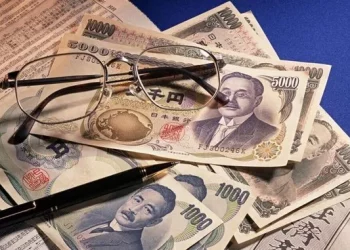The $1000 dollar bill holds a certain mystique and curiosity for many. With its historical roots and the changing landscape of currency usage, it’s worth exploring whether such a high-denomination note still exists in circulation today, and what implications its existence or absence has for the modern economy. This article delves into the history of the $1000 dollar bill, its current status, and the broader context of high-denomination currency.
The History of the $1000 Dollar Bill
Origins and Early Use
The $1000 dollar bill first made its appearance in the United States during the Civil War era. Initially issued as a means to facilitate large transactions between banks, the note was part of a broader range of high-denomination bills that included $500, $5000, and even $10,000 notes. These bills were not intended for everyday use by the general public but served as a convenient method for financial institutions to transfer large sums of money.
Design and Features
Over the years, the design of the $1000 dollar bill underwent several changes. One of the most iconic versions features the portrait of Grover Cleveland, the 22nd and 24th President of the United States. The reverse side of the bill is adorned with intricate designs and the Great Seal of the United States, reflecting the grandeur and significance of the currency.
Role in the Economy
High-denomination bills like the $1000 dollar bill played a critical role in the pre-digital era of banking. Before the advent of electronic funds transfer and other modern banking technologies, these bills were essential for efficiently conducting large financial transactions. They reduced the need for transporting large volumes of lower-denomination bills and helped streamline the operations of banks and businesses.
The Decline of High-Denomination Bills
The Move Towards Lower Denominations
The necessity for high-denomination bills began to wane as the financial system evolved. With the establishment of the Federal Reserve System in 1913 and the increased use of checks and electronic payment systems, the reliance on large-denomination currency decreased. The last series of $1000 dollar bills was printed in 1945, during World War II, but they remained in circulation for some time after.
Official Discontinuation
In 1969, the Federal Reserve and the Treasury Department decided to officially discontinue the use of high-denomination bills, including the $1000 dollar bill. This decision was primarily driven by concerns over money laundering, tax evasion, and other illicit activities that such large bills could facilitate. By discontinuing these bills, the government aimed to make it more difficult for criminals to conduct large cash transactions without detection.
Legal Status
Although the $1000 dollar bill is no longer printed or issued, it remains legal tender. This means that any $1000 dollar bills still in existence can technically be used for transactions. However, their rarity and the historical value they hold often make them more valuable to collectors than their face value.
Current Status of the $1000 Dollar Bill
Collectors’ Items
Today, the $1000 dollar bill is primarily found in the hands of currency collectors and numismatists. The value of these bills can far exceed their nominal worth, depending on their condition, rarity, and historical significance. Some well-preserved $1000 dollar bills can fetch thousands of dollars at auction, making them prized possessions for collectors.
Practical Use
In practical terms, the $1000 dollar bill is virtually nonexistent in everyday transactions. Modern banking practices and the widespread use of digital payment methods have rendered such high-denomination bills obsolete. Most businesses and financial institutions would likely refuse to accept a $1000 dollar bill due to the logistical challenges and potential security concerns associated with verifying its authenticity.
See Also: How Strong is the US Dollar in Australia?
Impact on the Economy
The absence of high-denomination bills like the $1000 dollar bill has minimal impact on the overall economy. The vast majority of financial transactions today are conducted electronically, and the need for physical cash has decreased significantly. The decision to discontinue these bills was more about curbing illegal activities than addressing any practical economic necessity.
The Broader Context of High-Denomination Currency
Global Perspectives
The United States is not alone in its decision to phase out high-denomination currency. Many countries have taken similar steps to combat financial crime and improve the efficiency of their banking systems. For example, the European Central Bank decided to stop issuing the €500 note in 2019, citing concerns over its use in illegal activities.
The Future of Physical Currency
The role of physical currency in the global economy continues to evolve. As digital payment methods become increasingly prevalent, the need for large-denomination bills diminishes. Cryptocurrencies, mobile payment apps, and other digital financial tools are reshaping the way people conduct transactions, further reducing the reliance on traditional cash.
High-Denomination Bills as Historical Artifacts
High-denomination bills like the $1000 dollar bill serve as important historical artifacts, offering a glimpse into the economic practices and priorities of earlier times. They are a testament to the evolution of currency and the ways in which technological advancements have transformed the financial landscape.
Conclusion
The $1000 dollar bill, once a crucial component of the United States’ financial system, has become a relic of the past. Although it remains legal tender, its practical use has all but disappeared, supplanted by modern banking technologies and digital payment methods. Today, the $1000 dollar bill is cherished by collectors and historians, symbolizing a bygone era of high-denomination currency. As the world continues to move towards a cashless economy, the $1000 dollar bill stands as a reminder of the ever-changing nature of money and its role in society.
Related Topics:


























